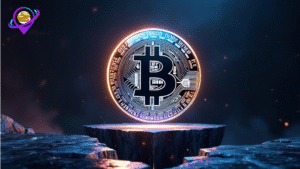With the increasing popularity of non-fungible tokens (NFTs), more and more people are becoming interested in creating their own. NFTs are unique digital assets that can be used to represent a wide variety of items, including artwork, music, and even tweets. In this article, we will provide you with a step-by-step guide on how to create an NFT.
What is an NFT?
Before we get into the steps of creating an NFT, let’s first define what an NFT is. NFT stands for non-fungible token, which means that it is a unique digital asset that cannot be replicated. NFTs are often used to represent digital artwork, music, videos, or other creative works, and they are stored on a blockchain network.
What do you need to create an NFT?
To create an NFT, you will need the following:
- A digital asset that you want to turn into an NFT, such as a piece of artwork or music
- A digital wallet that supports the blockchain network you plan to use
- Some cryptocurrency to pay for the transaction fees associated with creating and listing the NFT
- A platform to mint and list your NFT
Step 1: Choose a Platform
The first step in creating an NFT is to choose a platform to mint and list it. There are many different platforms available, each with their own pros and cons. Some of the most popular platforms include OpenSea, Rarible, and Nifty Gateway. When choosing a platform, consider factors such as fees, ease of use, and the community that uses the platform.
Step 2: Create a Digital Asset
Once you have chosen a platform, the next step is to create a digital asset that you want to turn into an NFT. This could be a piece of artwork, music, or any other digital asset that you own the rights to. Keep in mind that the more unique and high-quality your digital asset is, the more likely it is to sell for a higher price.
Step 3: Mint the NFT
Once you have created your digital asset, the next step is to mint the NFT on your chosen platform. To do this, you will need to connect your digital wallet to the platform and follow their instructions for minting an NFT. Minting an NFT involves creating a smart contract on the blockchain that represents your digital asset as a unique, non-fungible token.
Step 4: List the NFT
After you have minted your NFT, the next step is to list it for sale on the platform. You will need to set a price for your NFT and provide a description and any additional information that potential buyers may find useful. Keep in mind that the platform will take a percentage of the sale price as a fee.
Step 5: Market the NFT
The final step in creating an NFT is to market it to potential buyers. This could involve promoting it on social media, reaching out to collectors and investors, or working with an agent or gallery. The more exposure your NFT gets , the more likely it is to sell for a higher price. Consider reaching out to niche communities that may be interested in your digital asset, such as art or music enthusiasts.
Best Practices to Create an NFT
To create a successful NFT, there are a few best practices to keep in mind:
- Choose a unique and high-quality digital asset to turn into an NFT
- Use a reputable platform to mint and list your NFT
- Set a reasonable price for your NFT based on market trends and the value of your digital asset
- Provide a detailed description and any additional information that potential buyers may find useful
- Market your NFT to potential buyers to increase exposure and demand
Benefits of Creating an NFT
There are several benefits to creating an NFT, including:
- The ability to monetize digital assets that were previously difficult to monetize
- The ability to create a unique and valuable digital asset that can be bought, sold, and traded
- The potential for increased exposure and recognition for your digital artwork or other creative works
Potential Downsides of Creating an NFT
While there are many benefits to creating an NFT, there are also some potential downsides to consider:
- The high transaction fees associated with minting and listing an NFT
- The volatility of the cryptocurrency market, can impact the value of your NFT
- The potential for copyright infringement or other legal issues if you do not own the rights to the digital asset you are turning into an NFT
How to Ensure Your NFT is Secure
When creating an NFT, it is important to take steps to ensure its security. This includes using a reputable platform to mint and list your NFT, choosing a strong password for your digital wallet, and storing your cryptocurrency and NFT in a secure location. You may also want to consider using a hardware wallet to store your cryptocurrency and NFT.
Conclusion
In conclusion, creating an NFT can be a lucrative and exciting opportunity for creators and collectors alike. By following the steps outlined in this guide, you can create a unique and valuable digital asset that can be bought, sold, and traded on a blockchain network. However, it is important to consider the potential downsides and legal issues involved in creating an NFT and take steps to ensure its security. By doing so, you can create an NFT that is both marketable and secure. So, if you have a digital asset that you believe has value, consider creating an NFT and joining the growing community of NFT collectors and creators.






